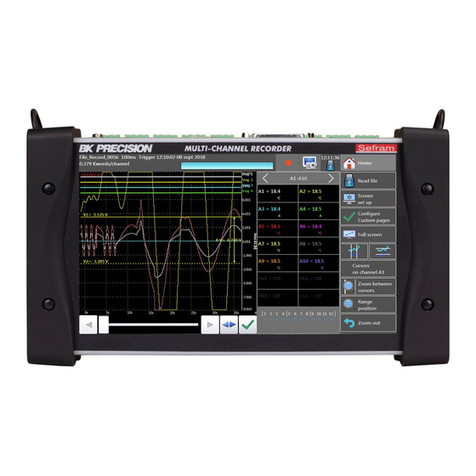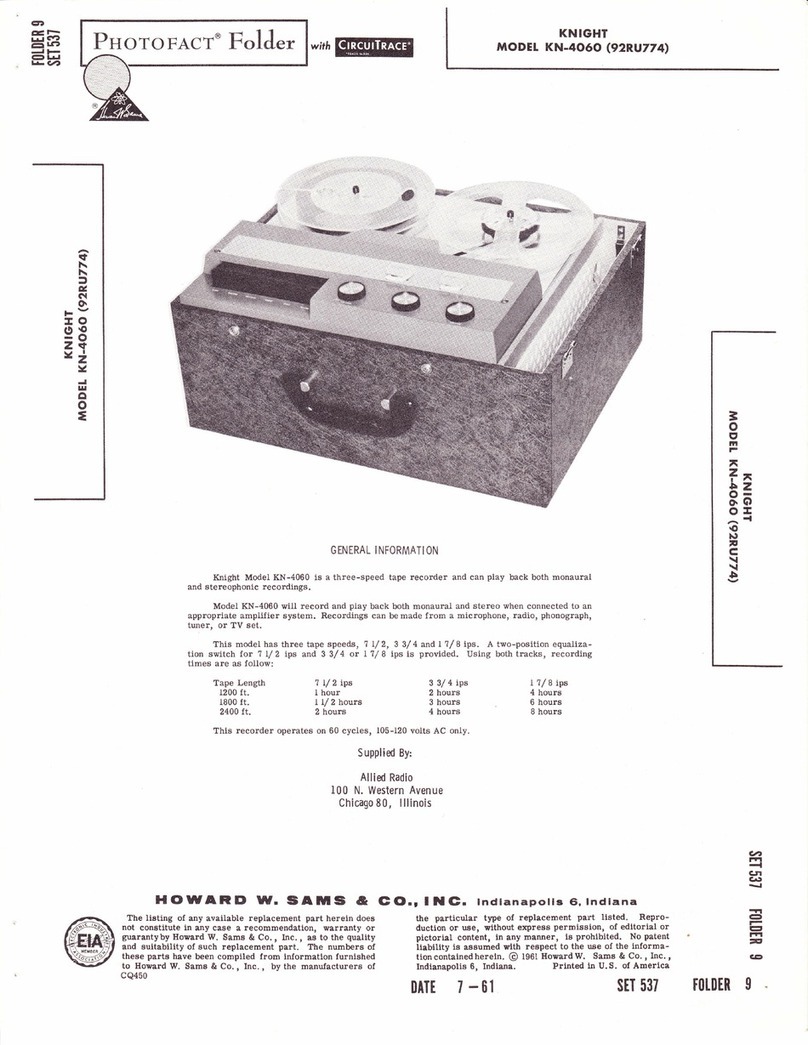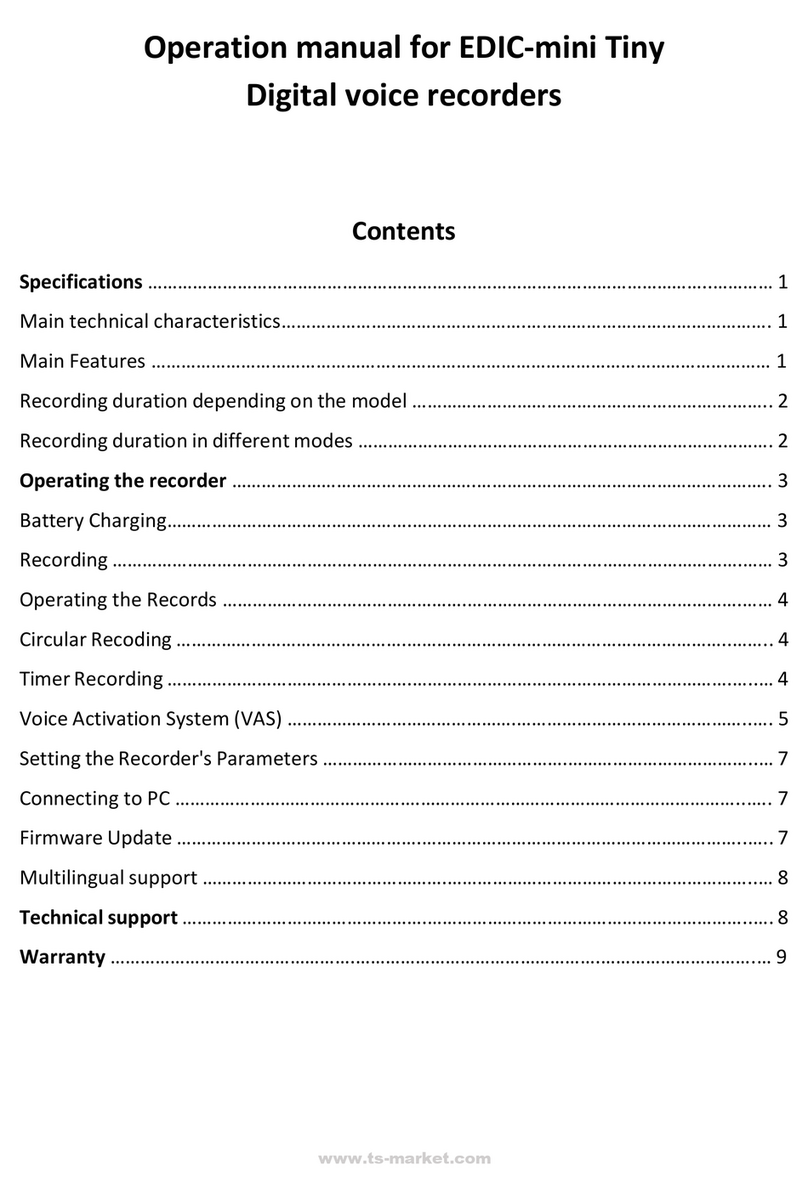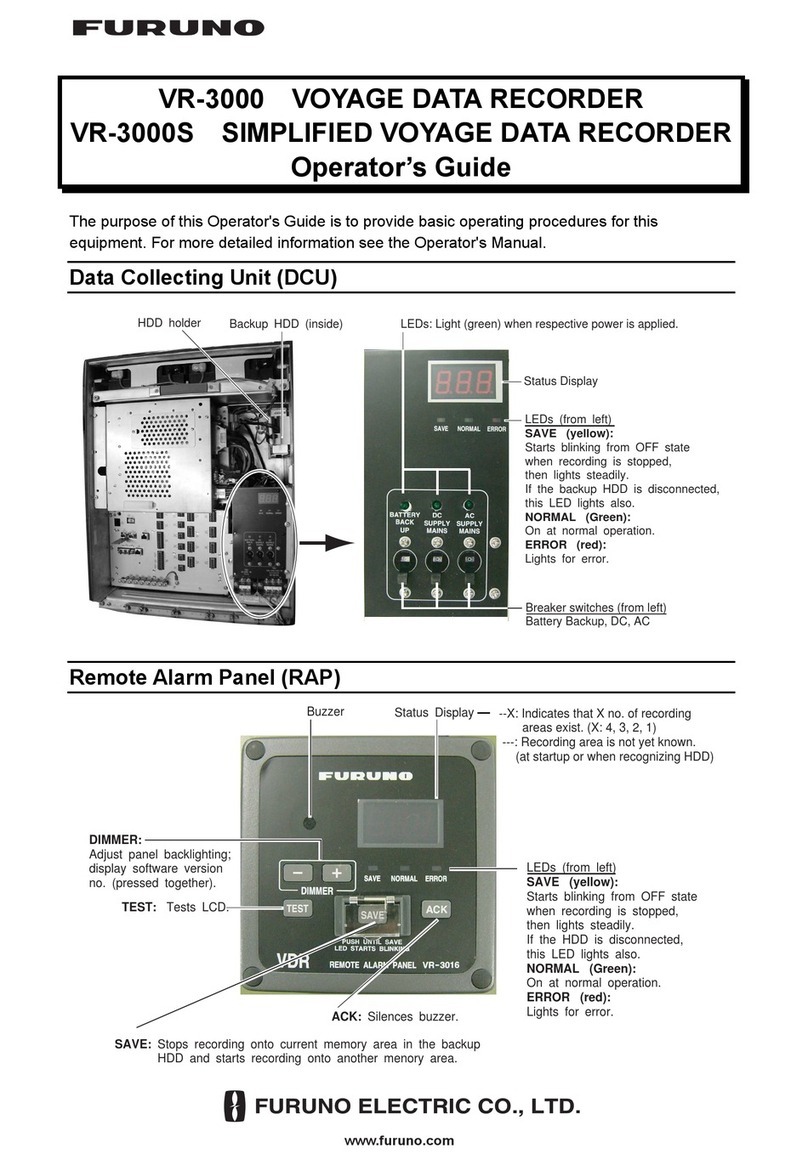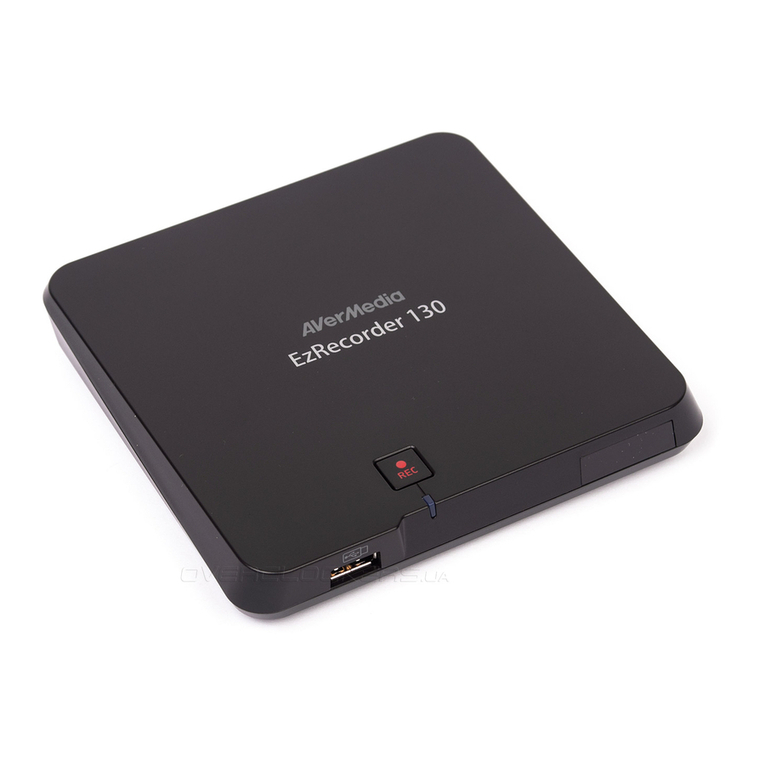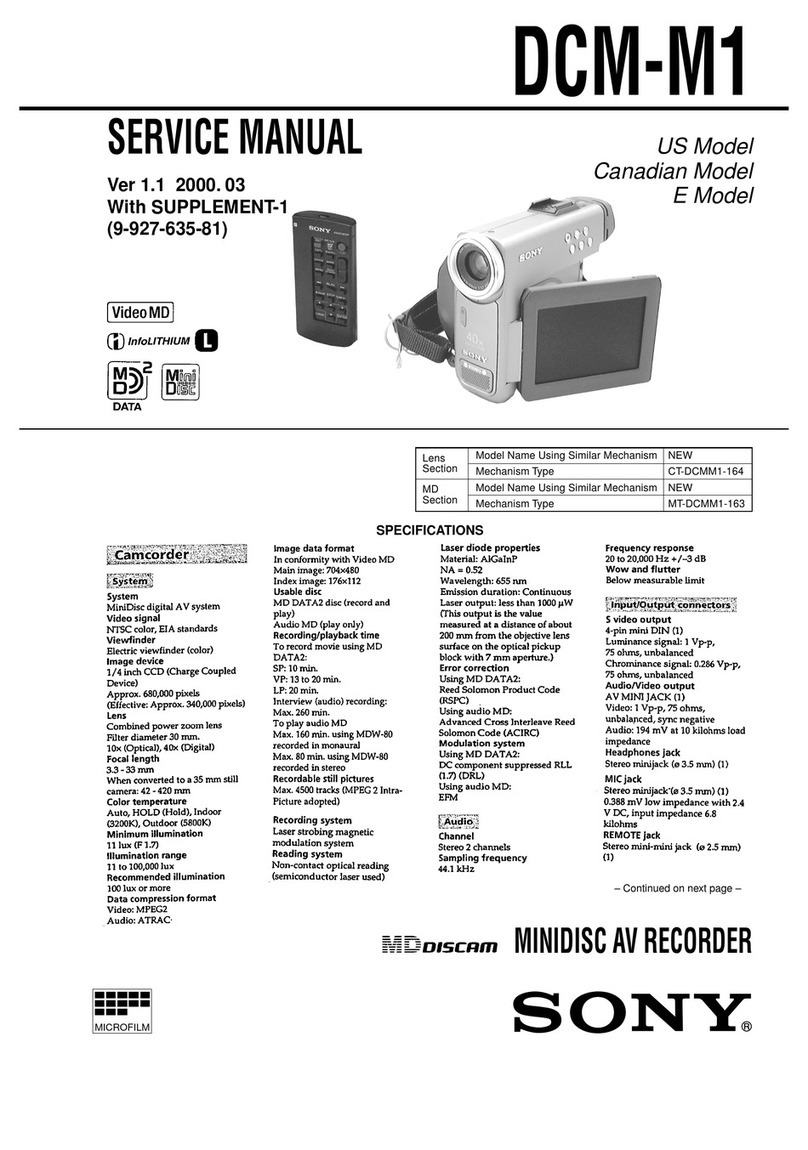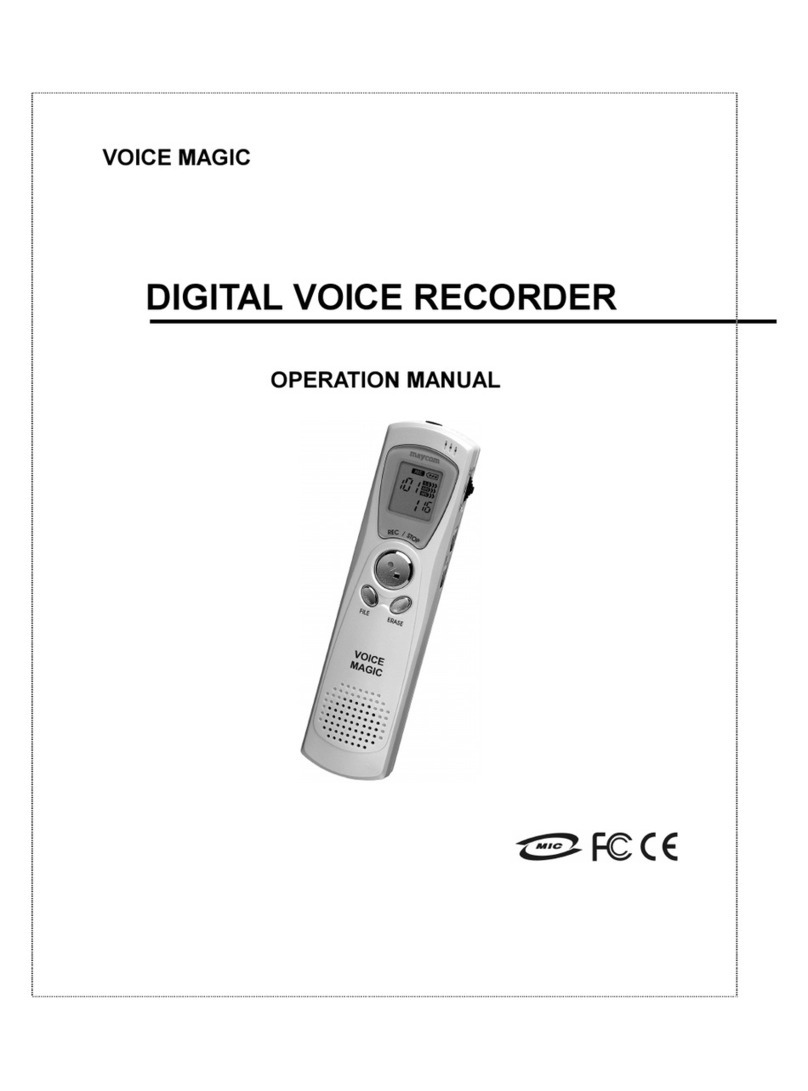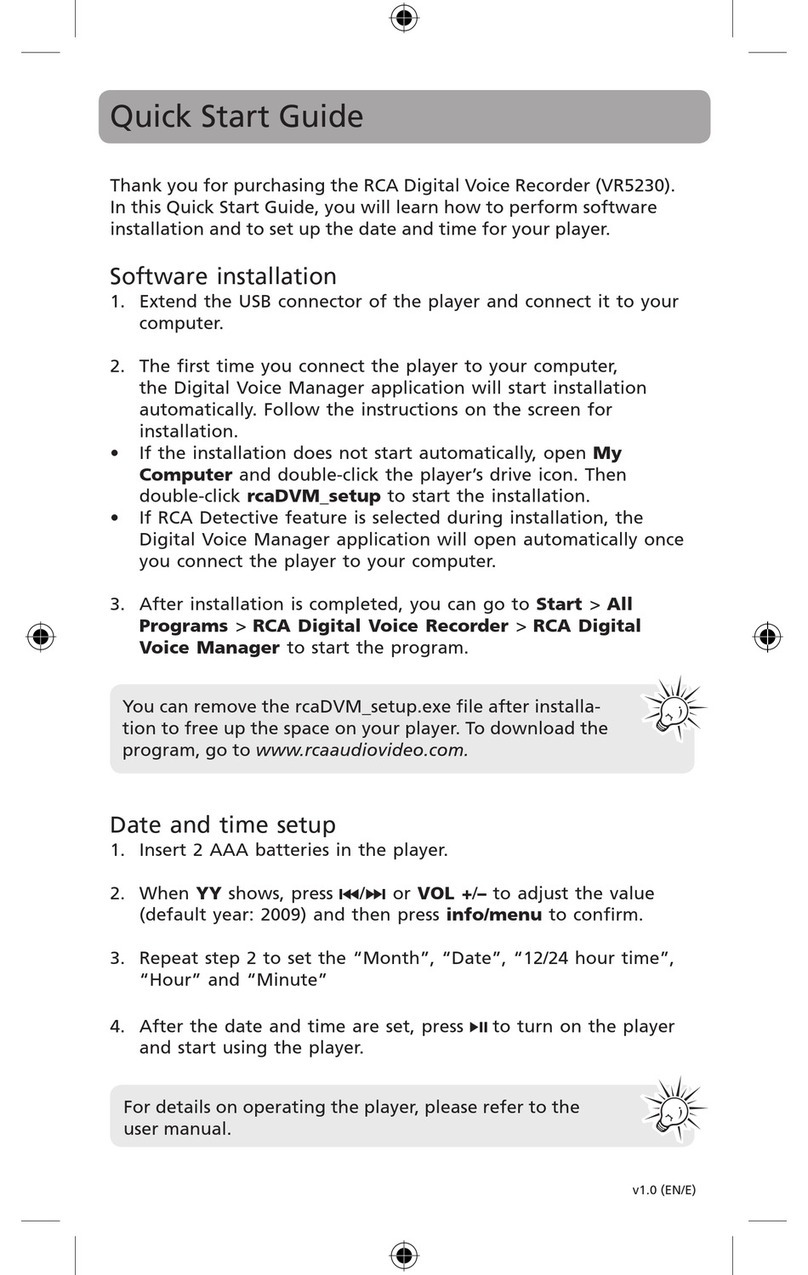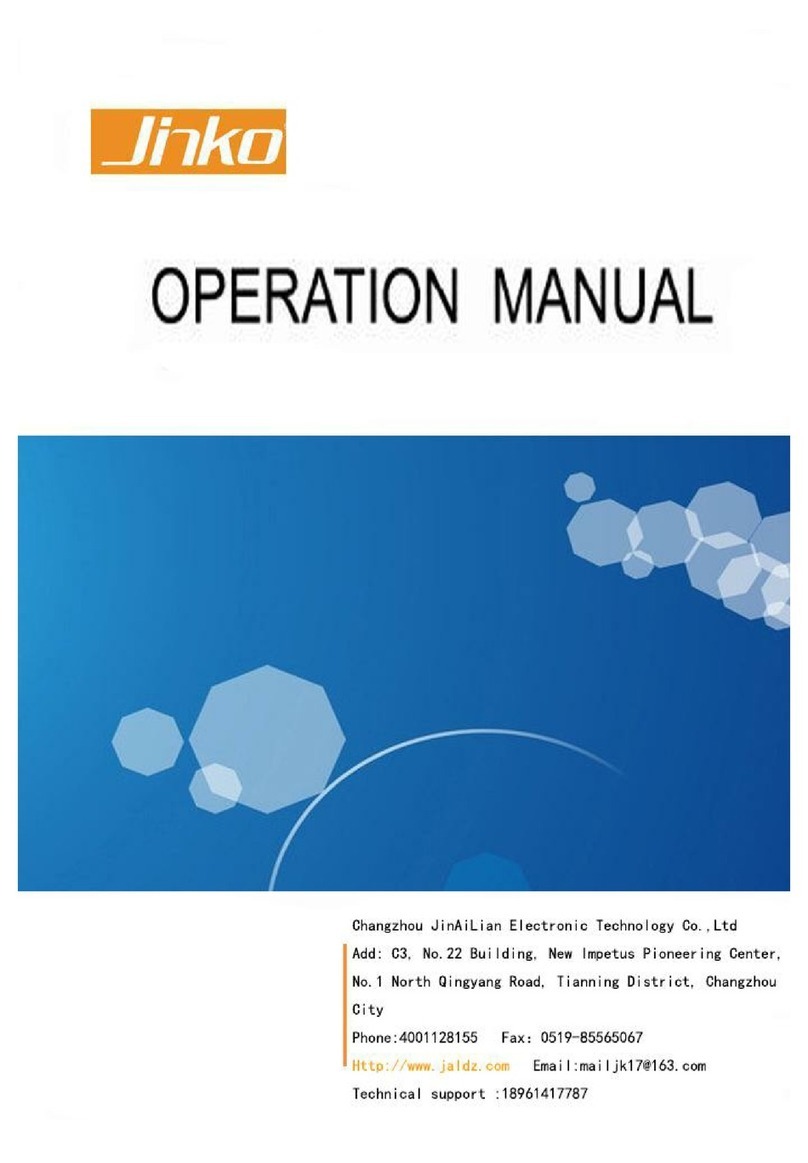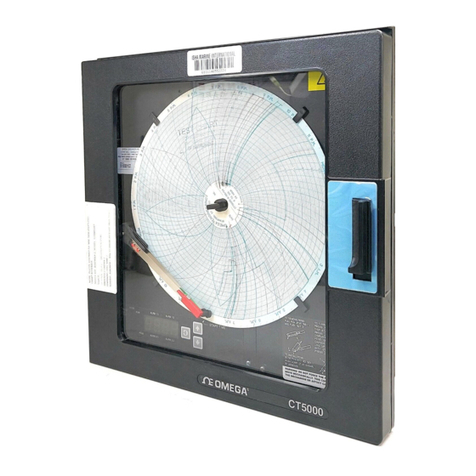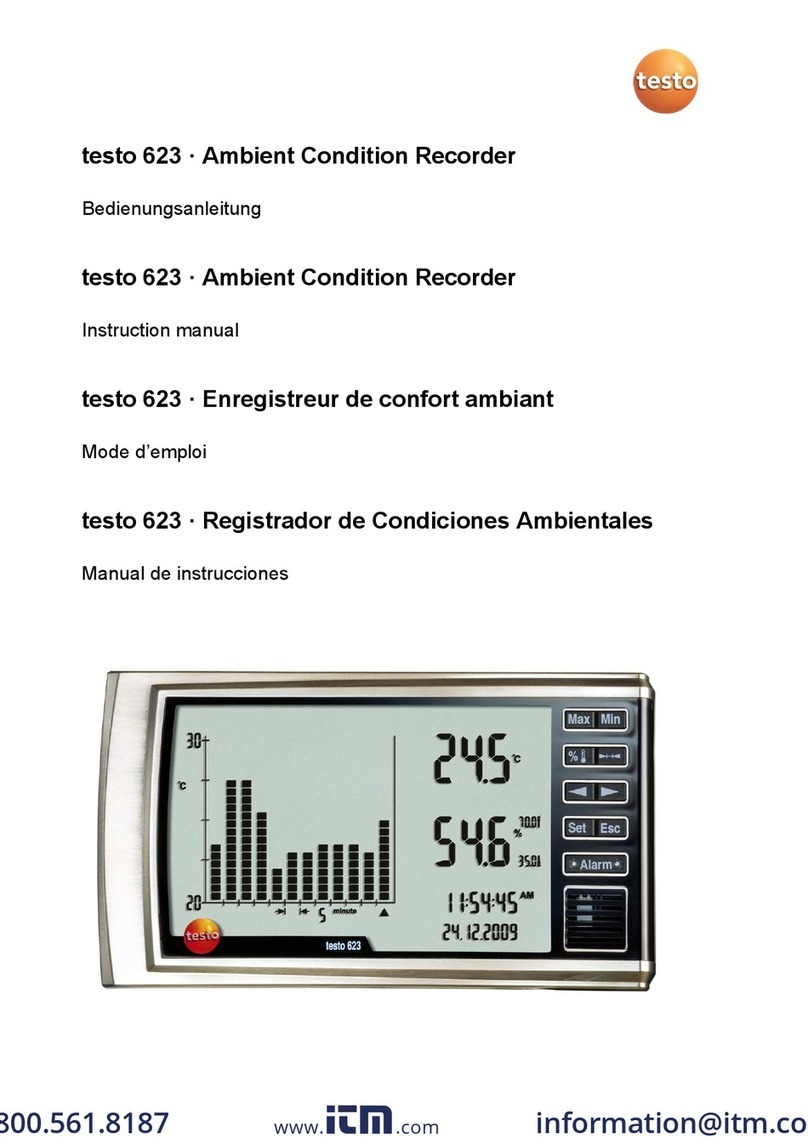SEFRAM BK Precision DAS60 User manual

RECORDER
DAS60
USER’S MANUAL
November 2017

Thank you for buying a SEFRAM recorder and for your trust in our company. The main goal of our
various teams (research department, production, commercial, after-sales…) is to meet your
requirements as much as possible by designing or updating high tech products.
With your recorder, you will find a CD-ROM including the user’s manual of the DAS60 recorder.
Please read cautiously this user’s manual for an optimal use of your recorder.
Our teams are available to provide you any additional information:
04-77-59-01-01
Fax: +33 (0)4 77 57 23 23
Web: www.sefram.fr
Copyright Sefram, 2017. All rights reserved.
Any total or partial copy of this document needs the authorization of Sefram.

WARRANTY
Your instrument is guaranteed for two years for labor and parts against any manufacturing defect
and/or functioning hazard. This guarantee extends from the delivery date and ends 730 calendar
days later.
In case of guarantee contract, this will cancel or replace these guarantee conditions here above.
The guarantee conditions by SEFRAM are available on the website www.sefram.com. The general
guarantee conditions should prevail on the following conditions that they sum up.
This guarantee does not cover the result of any abnormal use, handling mistake or mistake in the
storage conditions outside the defined range.
In case of application of the guarantee, the user shall return, at its own expenses, the relevant
appliance to our factory:
SEFRAM Instruments & Systèmes
After-Sales Service
32, rue Edouard MARTEL
BP 55
42009 SAINT-ETIENNE CEDEX 2
And add a description of the observed breakdown to the appliance.
The standard supplies provided with the appliance (cables, outlets…), the consumables (batteries
…) and the optional supplies (suitcases…) are guaranteed for 3 months against any manufacturing
defect.
Such items as a LCD screen or a touchpad are guaranteed only for a normal use.
The guarantee does not cover wearing, accidental breaks or consecutive to a shock or any abnormal
use.
The factory options integrated to the appliance are guaranteed for the same duration as the
appliance itself.
In case of replacement or repair of the product, the remaining guarantee duration shall be:
-The remaining duration of the guarantee if the appliance is still under guarantee
-If the guarantee duration is less than 90 days, the replaced part is guaranteed for 90 days
Any replacement part becomes the property of the user and the exchanged parts become the
property of SEFRAM.
In case of intervention by an insurance company, the product becomes the property of the insurance
company upon its exclusive request. Else, it shall remain property of the user.
The guarantee covers exclusively the materials manufactured and provided by SEFRAM.
Any intervention by the user or any third party without prior authorization by the company voids
the guarantee.
The user shall be responsible for the return of its appliance to our site. Hence, it shall provide for a
conditioning that shall correctly protect the appliance while shipping. It shall subscribe, at its own
expenses, any insurance required for the transport.

The SEFRAM company reserves the right to refuse any product wrongly conditioned and not to
take in charge any break consecutive to the transport.
Particular case of the battery: There is a Li-ion battery as a standard equipment of this appliance. It
shall not be transported outside the appliance. In no case shall the user replace it. Its replacement in
the factory is necessary to check the charge system and the protective securities.
What to do in case of malfunction?
In case of malfunction or for any advice for use, please contact the technical support by SEFRAM
Instruments & Systèmes:
A technician shall answer you and give you any information required to solve your problem.
What to do in case of failure?
In case of failure of your appliance, please contact the technical support:
Some advice!
Some technical help!
SEFRAM Instruments & Systèmes commits itself to help you on the phone about the use of your
appliance.
Please call or Technical Support:
We thank you for your trust.

METROLOGY
The meteorological conditions of your measurement instrument are defined in the specifications of
this notice. Climate and environmental conditions restrict the specifications of your recorder.
SEFRAM checks the characteristics of each appliance one by one on an automatic bench during its
manufacture. The adjustment and control are guaranteed under conditions of the ISO9001
certification by facilities in connection with the COFRAC (or equivalent in the context of ILAC
reciprocity).
The specified characteristics are considered stable for a period of 12 months from the first use under
normal conditions of use.
We recommend a check after 12 months and max. 24 months of use, then every 12 months after 24
months.
For any check of the characteristics, the following average climate conditions shall be maintained
(23°C+3°C –50(+20)%RH). The recorder should have been working for 0,5 hour before check.
We recommend that you have this control made by our after-sales service (Service Après-Vente) for
the best service and preservation of the measuring quality of your instrument.
When a recorder returns to SEFRAM, maximum service is provided with internal updating
according to the required adjustments and software updates. In case of shift in the characteristics,
your instrument shall be adjusted to recover its original characteristics.

Important Information
1.TABLE OF CONTENT
1. TABLE OF CONTENT ............................................................................................................1.1
2. IMPORTANT INFORMATION...............................................................................................2.7
2.1. Specific cautions.................................................................................................................2.7
2.2. Security instructions ...........................................................................................................2.7
2.3. Conformity and limits of the device...................................................................................2.8
3. PRESENTATION.....................................................................................................................3.1
3.1. General................................................................................................................................3.1
3.2. Description..........................................................................................................................3.2
3.2.1. Connection: .................................................................................................................3.2
3.3. Touch screen.......................................................................................................................3.3
3.3.1. Description of the title bar...........................................................................................3.3
3.3.2. Description of the channel validation window............................................................3.4
3.3.3. Description of the network analysis window..............................................................3.5
3.4. MAIN MENU.....................................................................................................................3.7
3.5. Update of the internal software ..........................................................................................3.9
4. SETUP and PRECAUTIONS of USE ......................................................................................4.1
4.1. Loading of the recording paper ..........................................................................................4.1
Precautions for storage of the recordings..................................................................................4.1
4.2. Setup...................................................................................................................................4.2
4.3. Configuration at power-up..................................................................................................4.2
4.3.1. Voltage measurement..................................................................................................4.3
4.3.2. Temperature measurement with a thermocouple ........................................................4.3
4.3.3. Temperature measurement with Pt100/Pt1000...........................................................4.3
4.3.4. Current measurement ..................................................................................................4.3
4.3.5. Connection of the ground............................................................................................4.4
4.4. Routine maintenance ..........................................................................................................4.4
4.5. Battery ................................................................................................................................4.4
4.6. Offset calibration................................................................................................................4.5
4.7. Default calibration..............................................................................................................4.6
4.8. Screen brightness................................................................................................................4.6
4.9. Locking of the recorder ......................................................................................................4.6
4.10. User mode.......................................................................................................................4.6
5. USE ...........................................................................................................................................5.1
5.1. Description of the various modes.......................................................................................5.1

Important Information
5.2. Setup menu.........................................................................................................................5.2
5.3. Channels Menu...................................................................................................................5.3
5.3.1. Analog channels..........................................................................................................5.4
5.3.1.1. Type of measurement ΔV/Δt :.................................................................................5.5
5.3.1.2. Type of measurement ʃV.dt:....................................................................................5.7
5.3.2. Additional functions between channels.......................................................................5.8
5.3.3. Logic channels.............................................................................................................5.9
5.4. Validation of the channels................................................................................................5.10
5.5. « Direct display » key ............................................................................................5.11
5.5.1. Real time on-screen display of the measurements....................................................5.11
5.5.2. XY display.................................................................................................................5.12
5.5.3. Digital display...........................................................................................................5.13
5.6. « Trigger » menu ..............................................................................................................5.15
5.7. « Memory output » key .........................................................................................5.16
5.8. « Record » key ...................................................................................................5.17
5.9. Screen copy.......................................................................................................................5.18
6. TRIGGERS ...............................................................................................................................6.1
6.1. Analog channel trigger .......................................................................................................6.2
6.1.1. Single threshold...........................................................................................................6.2
6.1.2. Multiple thresholds......................................................................................................6.3
6.1.3. Parasites.......................................................................................................................6.4
6.1.4. Trigger on Logic Channels..........................................................................................6.5
7. MATHEMATICAL CALCULATIONS...................................................................................7.1
7.1. Definitions..........................................................................................................................7.1
7.2. Types of calculations..........................................................................................................7.2
8. DIRECT MODE........................................................................................................................8.1
8.1. Launching the printing........................................................................................................8.1
8.2. Configuration of print.........................................................................................................8.3
8.3. Relaunching the printing ....................................................................................................8.4
8.4. Writing information............................................................................................................8.4
9. MEMORY MODE....................................................................................................................9.1
9.1. Setup and start of the data acquisition................................................................................9.1
9.2. Sampling period..................................................................................................................9.3
9.3. Internal memory, blocks.....................................................................................................9.3
9.4. Trigger position ..................................................................................................................9.3

Important Information
9.5. Double Trigger mode..........................................................................................................9.4
9.6. Recording............................................................................................................................9.5
9.7. Memory output ...................................................................................................................9.7
10. TEMPLATE MODE ............................................................................................................10.1
10.1. Setup and launching of the data acquisition .................................................................10.1
10.2. Creation of the template................................................................................................10.3
11. FILE MODE.........................................................................................................................11.2
11.1. Setup and triggering of the data acquisition .................................................................11.2
11.2. Restrictions ...................................................................................................................11.3
12. NETWORK ANALYSIS.....................................................................................................12.1
12.1. General..........................................................................................................................12.1
12.2. Network setup...............................................................................................................12.2
12.3. Real time display of the signals ....................................................................................12.5
12.4. Power analysis setup ..............................................................12.6
12.4.1. Parameter acquisition file......................................................................................12.6
12.4.2. Record launch........................................................................................................12.6
12.4.3. Recordable parameters ..........................................................................................12.8
12.5. Record...........................................................................................................................12.8
12.6. Measurement process....................................................................................................12.9
13. FILE MANAGEMENT........................................................................................................13.2
13.1. General..........................................................................................................................13.2
13.2. Management of the configuration files.........................................................................13.3
13.2.1. Save setup files......................................................................................................13.3
13.2.2. Load setup files......................................................................................................13.3
13.2.3. Save data acquisitions............................................................................................13.3
13.2.4. Recovery of the data acquisition files....................................................................13.5
13.3. Operating software........................................................................................................13.7
13.3.1. Transfer via FTP....................................................................................................13.7
13.3.2. Display under SeframViewer ................................................................................13.8
13.3.3. Managing with SeframPilot...................................................................................13.9
14. INPUTS / OUTPUTS...........................................................................................................14.2
14.1. Additional Input/Output Connectors.............................................................................14.2
14.2. Logic inputs ..................................................................................................................14.3
14.2.1. Use.........................................................................................................................14.3
14.3. Alarm outputs................................................................................................................14.3
14.3.1. Use.........................................................................................................................14.4
14.4. Power supply output .....................................................................................................14.4
14.5. Exvoltage box input/output interface............................................................................14.5

Important Information
15. ETHERNET INTERFACE..................................................................................................15.2
15.1. Ethernet Interface..........................................................................................................15.2
15.1.1. General...................................................................................................................15.2
15.2. WIFI interface...............................................................................................................15.3
15.3. FTP transfer ..................................................................................................................15.4
15.4. Managing with VNC:....................................................................................................15.5
15.4.1. Changing the password..........................................................................................15.5
15.4.2. External software VNC Viewer.............................................................................15.5
15.4.3.......................................................................................................................................15.6
15.5. Programming language.................................................................................................15.6
15.5.1. Format of the reception messages .........................................................................15.6
15.5.2. Formats of emission messages ..............................................................................15.7
15.6. Standard instructions.....................................................................................................15.8
15.7. Indication of the status of the device ............................................................................15.9
15.7.1. Structure of the status data.....................................................................................15.9
15.7.2. Service request logs.............................................................................................15.10
15.7.3. Log of standard events.........................................................................................15.12
15.7.4. Log of alarms.......................................................................................................15.12
15.7.5. Use of the status data structure............................................................................15.13
15.8. Dictionary of programming ........................................................................................15.15
15.8.1. Configuration.......................................................................................................15.15
15.8.2. Parameters of the channels..................................................................................15.16
15.8.3. Functions of the channels and between channels................................................15.18
15.8.4. Paper....................................................................................................................15.19
15.8.5. Triggerings...........................................................................................................15.20
15.8.6.....................................................................................................................................15.20
15.8.7. Triggers................................................................................................................15.21
15.8.8.....................................................................................................................................15.21
15.8.9. Memory mode......................................................................................................15.22
15.8.10. Relaunchs, real time save ....................................................................................15.23
15.8.11...................................................................................................................................15.23
15.8.12. Launching plots and data acquisitions.................................................................15.23
15.8.13. Diagrams..............................................................................................................15.24
15.8.14. Direct display.......................................................................................................15.25
15.8.15. Mathematical functions .......................................................................................15.25
15.8.16. Memory output ....................................................................................................15.26
15.8.17...................................................................................................................................15.26
15.8.18. Request of service................................................................................................15.27

Important Information
15.9. Error messages............................................................................................................15.27
16. TECHNICAL SPECIFICATIONS ......................................................................................16.1
16.1. Isolated inputs...............................................................................................................16.1
16.1.1. General characteristics...........................................................................................16.1
16.1.2. Voltage recording..................................................................................................16.1
16.1.3. RMS recording ......................................................................................................16.2
16.1.4. Temperature recording ..........................................................................................16.2
16.1.5. Frequency recording:.............................................................................................16.2
16.1.6. PWM recording .....................................................................................................16.2
16.1.7. Counting Recording:..............................................................................................16.2
16.1.8. Sampling................................................................................................................16.3
16.1.9. Bandwidth..............................................................................................................16.3
16.2. Additional inputs / outputs............................................................................................16.4
16.2.1. Logic channels.......................................................................................................16.4
16.2.2. Alarm outputs ........................................................................................................16.4
16.2.3. External power supply...........................................................................................16.4
16.3. Inputs with platinum resistance ....................................................................................16.4
16.4. Triggers.........................................................................................................................16.5
16.5. Memory data acquisition...............................................................................................16.5
16.6. Data acquisition to file..................................................................................................16.5
16.7. Network analysis...........................................................................................................16.6
16.7.1. Ranges and accuracies for voltage and intensity...................................................16.6
16.7.2. Frequency ..............................................................................................................16.6
16.7.3. Power factor...........................................................................................................16.6
16.7.4. Peak and peak factor..............................................................................................16.6
16.7.5. Rate of harmonics as calculated in power analysis ...............................................16.7
16.8. Printer option ................................................................................................................16.7
16.9. Communication interface..............................................................................................16.7
16.9.1. Ethernet..................................................................................................................16.7
16.9.2. USB connectors.....................................................................................................16.7
16.10. Display..........................................................................................................................16.8
16.11. Environment conditions................................................................................................16.8
16.11.1. Weather conditions................................................................................................16.8
16.12. Power supply - battery ..................................................................................................16.8
16.12.1. Dimensions and weight .........................................................................................16.8
16.13. Electromagnetic compatibility, Security.......................................................................16.9
16.13.1. Electromagnetic compatibility according to EN 61326-1 and 61326-1-2.............16.9
16.13.2. Security, insulation class, installation category...................................................16.10

Important Information
16.14. Accessories .................................................................................................................16.11
16.14.1. Accessories provided with the device .................................................................16.11
16.14.2. Accessories and options.......................................................................................16.11
16.14.3. Consumables........................................................................................................16.11
17. APPENDS............................................................................................................................17.2
17.1. Information about the input calibers.............................................................................17.2
17.1.1. Insulated voltage type inputs.................................................................................17.2
17.2. Measurement accuracy for thermocouple.....................................................................17.3
17.4. Instant measurement accuracy as a function of the filters............................................17.5
17.5. Accuracy class –class index.........................................................................................17.5

Important Information
2.IMPORTANT INFORMATION
Please read cautiously the following instructions before using your recorder.
2.1. Specific cautions
Do not use the product for any other use than planned.
Use normalized cords for the connection of the device to the measurement points.
To prevent any risk of electric shock, never plug or unplug the measurement cords when
linked to the mains.
Never use in a wet environment.
Never use in an explosive atmosphere.
In case of malfunction or for the maintenance of the device, only a qualified personal
shall be allowed to work on it. In such a case, it is necessary to use Sefram spare parts.
Never cover the device: there is live voltage.
2.2. Security instructions
For correct use of the device, it is necessary that the users abide by the security instructions
and the instructions of use described in this manual.
Specific warnings are provided all along this manual.
If required, there are warning symbols on the device
Symbols and definitions
Symbols in this handbook:
Warning: potential danger for the user
Attention: potential danger for the device and/or the connected equipment
Remark: important information.

Important Information
Symbols on the device:
Danger (high voltage): immediate corporal danger
Attention: See the handbook. Risk of damage to the material connected to the
instrument or to the instrument itself
Ground: accessible parts linked to the ground of the device.
2.3. Conformity and limits of the device
The DAS60 recorder is in conformity with CEI 61010-1 (2001-02).
It includes high-potting (IR) with two primary insulation levels (IP).
Thanks to them, the channels 1 to 6 are insulated from each other and from the carter. This
architecture allows independent floating measurements within the limits of the admissible
maximum voltages.
See chapter "Technical specifications".
IP: Main or additional insulation
IR: Reinforced insulation
Attention: Never apply a voltage higher than the maximum admissible voltage
between the channels and from the ground of the carter.
The use of the device at frequencies > 100Hz and of the voltages> 50V,
requires imperatively the connection of the earthing protection or power
supply for safety reasons.
CH1
Entrées
CH2
Entrées
accessible parts:
USB
Ethernet
Logical inputs
Pt100
Alarms
Power
Carter
DC/DC
DC/DC
DC/DC
+
Casing of the DAS30/50
IP
IP
IP
IR
IR
IR
IR
Opto-coupler
Opto-coupler

Presentation
Page 3.1
3.PRESENTATION
3.1. General
DAS60 is a programmable recorder that make it possible to measure and record voltages, currents,
temperatures, etc. on 6 channels and on 16 logical channels.
You can also record from Pt100 or Pt1000 probes on dedicated channels.
An integrated thermal printer option makes it possible to print signals in real time.
They can work in several modes:
Direct, for paper printing (option)
Memory, for acquisition on internal quick memory
File, for acquisition on internal SD card
Template, for acquisition on a pre-recorded template
Analysis of network
The "operator –recorder" dialog is made easier thanks to an intuitive interface on a wide touch
screen. The measurement parameters are easy to program.

Presentation
Page 3.2
3.2. Description
3.2.1. Connection:
1- A RJ45 connector for the ETHERNET 10/100BaseT interface
2- two USB connectors for (female) USB stick
3- a SUB-D 25-pin connector for the 16 logic inputs and the alarm outputs
4- 6 inputs through pin plugs according to the device
5- 2-way Pt100 (screw terminal block)
6- Power/Battery charger (on the upper side)
7- Power on button and light
8- Battery charging LED
9- Ground connector
Isolated inputs have 2 security terminals on each input:
1 red terminal: input « + »
1 black terminal: input « - »
4
5
3
1
2
6
7
8
9

Presentation
Page 3.3
3.3. Touch screen
3.3.1. Description of the title bar
Various zones on the screen:
1- Current mode (direct mode, memory mode…)
2- Status of acquisition (pending acquisition, stop)
3- Status of the battery
4- Direct access to display
5- Access to the display of the memory
6- Access to the recording
7- Screenshot button
8- Date and time
9- Access to the main menu
Note: By pressing on the date and time, you can access to the menu to change this information.
1
2
3
4
5
6
7
8
9

Presentation
Page 3.4
3.3.2. Description of the channel validation window
1- Change of the color of the channel (by pressing this button, you can access pre-defined
colors or design customary paint mixes:
2- Change the thickness of the line for the selected channel. You can also change this
thickness with the (thinner) and (thicker) keys
3- Checkbox to validate a threshold
4- Current threshold value or change of the threshold value
5- Information about the channel (caliber, thresholds, offset…)
6- Logic inputs : real time status of the logic inputs
6b- Logic inputs : validation of the logic inputs
7- Access to the parameters of the various channels
8- Temperature channels through Pt100 or Pt1000 type sensors
9- Function channels (they allow calculations between two channels)
10-Checkbox for validation of the channels
11-Parameter zone: you can change the name of the parameters
12-Key to change of parameter and display the current value
Note: By pressing the logic inputs, you pop up a window with all logic channels.
1
2
3
4
5
6
7
8
9
10
11
12
6b

Presentation
Page 3.5
Some information is available on this window:
-when clicking on a logic channel, the relevant pin on the connector turns red
-when pressing the keyboard, you can change the name of the channel.
3.3.3. Description of the network analysis window
1- Setup of the network analysis
2- Changing the color of the various measurements (voltage, current, power…)
1
2
3
4
5
6
7
8
9
10
11
12
13

Presentation
Page 3.6
3- Measurement mode of the current (clamp, shunt, transformer)
4- Parameters of the current measurement (conversion from the measured value and the
value sent to the recorder)
5- Nominal current in the phase conductor
6- Wiring scheme
7- Logic channels (validation and parameter setting)
8- Display of the measured values
9- Phase diagram
10-Type of network
11-Parameters of voltage
12-Value of the nominal voltage
13-Frequency of the network to analyze

Presentation
Page 3.7
3.4. MAIN MENU
1- Direct mode key (direct printing of the curve)
2- Memory mode key
3- File mode key
4- Template mode key
5- Network mode key
6- Start screen to display the serial number, the software version…
7- Recording
8- Replay of the memory
9- Digital display of the values of the various inputs
10-Display of the F(t) curve
11-Display of the XY curve
12-Configuration of the logic channels
13-Adjustment of the triggers
14-Setup of the device (language, date and time, alarm outputs, update of the internal
software, network connection, recovery of the configuration…)
15-Access to the table of channel configuration:
1
2
3
4
5
6
14
13
12
11
10
9
15
16
17
7
8
Table of contents
Other SEFRAM Voice Recorder manuals

